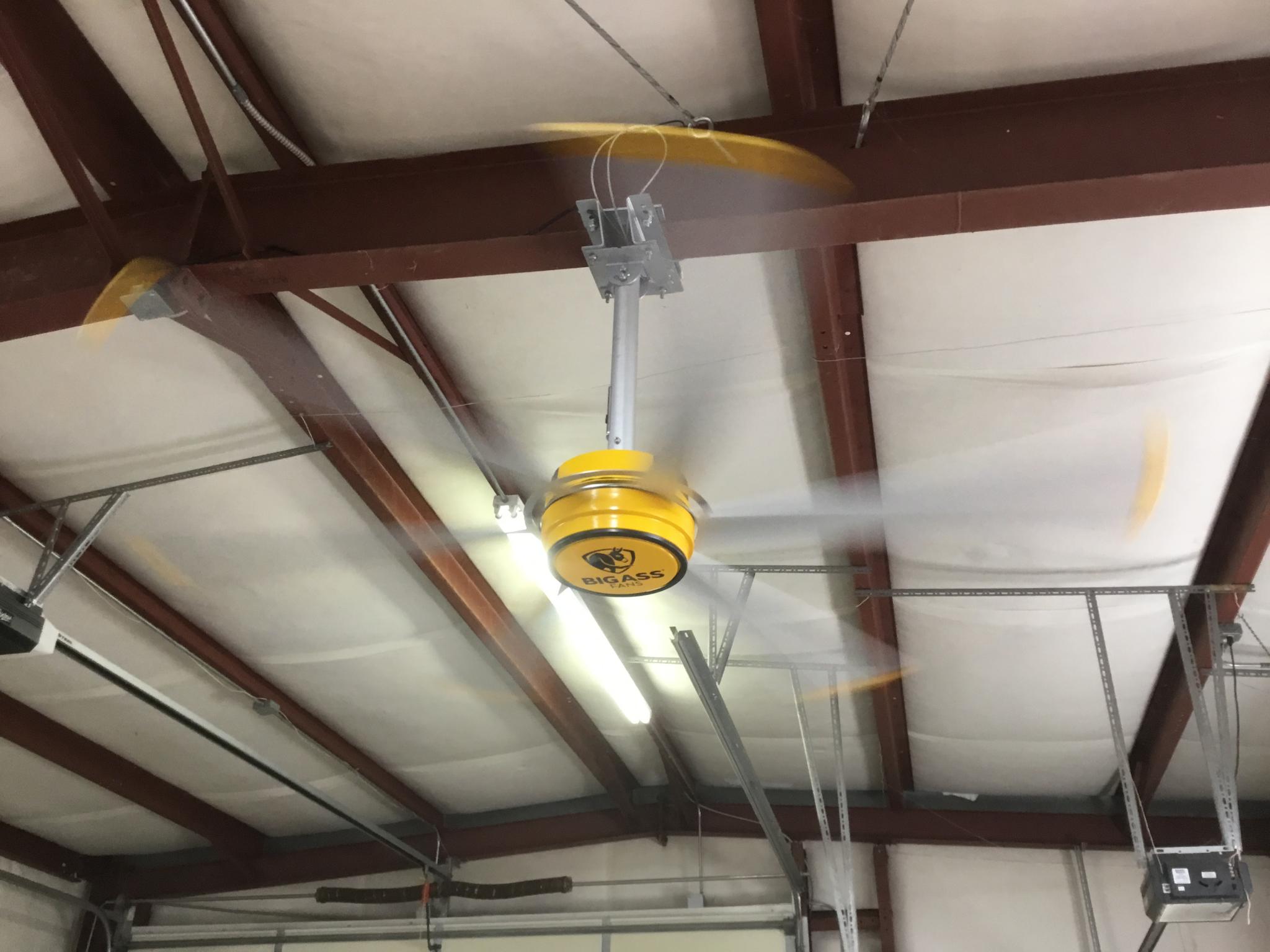A soaker hose on the roof works as both an evaporative cooler and as a direct heat reducer. The insulation won't matter all that much, as a cooler roof results in cooler insulation. Also, I make your altitude to be somewhere around 5,000 feet based on the vegetation so I see why you're getting such a large fan.

Toebra
HalfDork
5/4/18 3:25 p.m.
Keith Tanner said:
That will exchange the air in the shop but it will not dry the sweat from my brow. I personally like air movement, it makes me comfortable.
It will make the shop cooler. You have those running and a box fan swamp cooler in the window or doorway it will drop the temps even more and move some air over your fevered brow.
I personally don't get the BAF appeal. When they work, they are awesome, but they seem to me, at least, to be a crap-shoot quality-wise.
We had several of them at work, and a couple just kept running, while a few of them were dead within a couple of weeks.
I turned on the existing ceiling fan today because it was getting a little warm. All it does is go whonk whonk whonk and doesn't move any noticeable amount of air 
In reply to Keith Tanner :
FWIW, commercial poultry barns tend to use cross-ventilation. Either tunnel style, with a cooling pad at one end and fans at the opposite, cross style with pads and fans on opposing sides, or roof vent with pads on inlets mounted low and exhaust fans on the roof. The advantage here, as opposed to roof-mount swamp coolers, is that your water and fan can be mounted low, making access for maintenance easier. You need an air inlet on one wall that is covered with a poultry house cooling pad with water dripping on it (check agricultural supply sites) and a fan on the other wall that can pull air across the space. Low mounted means that you feel the airflow while on the ground, and it makes short work of any odors.


FWIW, I kept mine pretty cool in TX with two salvaged HVAC squirrel cage fans. They move a lot of air and don't make much noise. For a while I had them shoot across the concrete floor which was always cooler. Then I hung them at about head-high pointed down a bit and they did a nice job. Free (except mine were 240v so I added a circuit in the garage for the cost of a double breaker and 10' of romex)

So I guess I never finished up on this thread. The decision was to install a 22,000 BTU wall mount AC system - calculated by RossD. It struggles a bit on peak days and I kinda wish I'd leveled up to the next one, but overall it does the job. The reason I went for refrigerated air instead of an evaporative cooler is water. The shop doesn't have water, and I decided not to run a special water line down to the shop.
It's supplemented by a Big Ass Fan. It is magic. I leave it running on a fairly low setting all the time to distribute the cold air from the AC around the shop. No regrets at all.

I am considering adding a carport to the west side of the shop to shade my cars but also take the brunt of the afternoon sun off the wall of the shop, which will cut down on the heat gain as well. I'm also thinking about doing something to the roof to reflect more heat - it's light brown right now but silver would work better.
A little more on the parts that I installed last year: https://grassrootsmotorsports.com/forum/build-projects-and-project-cars/the-new-shop/138431/page7/
White pebble grain on the roof works much better than silver. They are using a product down the street from me right now that looks like .060" white spheres in a white adhesive.
That sounds like reflective road paint! I'm going to look around.
Thanks for keeping the thread alive. I'm dealing with sea level high humidity, but it is still useful.
Sounds like Snow Roof. Coating they use on flat roofed houses around here, white and kind of rubbery. Insulates and reflects heat. Not sure how Snow Roof would do with actual snow on the roof though
Elastomeric roof coating in white or silver will help a bit with heat transfer and is cheap for what it does. You also get to spend some time on the roof looking at every screw and making sure they’re correctly torqued down while rolling the coating on. Some leak due diligence.
In my 4500 sq-ft shop I ended up using 8 48” commercial ceiling fans purchased used at an auction. They are spaced evenly around the shop, wired together to a variable speed controller and move lots of air everywhere. I’m here in Northeast PA and it’s quite comfortable even in the hottest of summer days. It’s not FL, TX or Cali, but even with strings of 90+ days it’s no problem.
Heat rejection roof coatings is a really interesting rabbit hole down which to fall.
https://coolroofs.org/directory/results/search&channel=products&orderby=cf_product_manufacturer+cf_product_brand+cf_product_model+asc&keywords=coatings&cf_product_pri_prod_type=%22Field-Applied+Coatings%22
I have a FLIR camera, I'm going to head into the shop tomorrow and see where the heat's coming from. That'll let me figure out an approach.





































